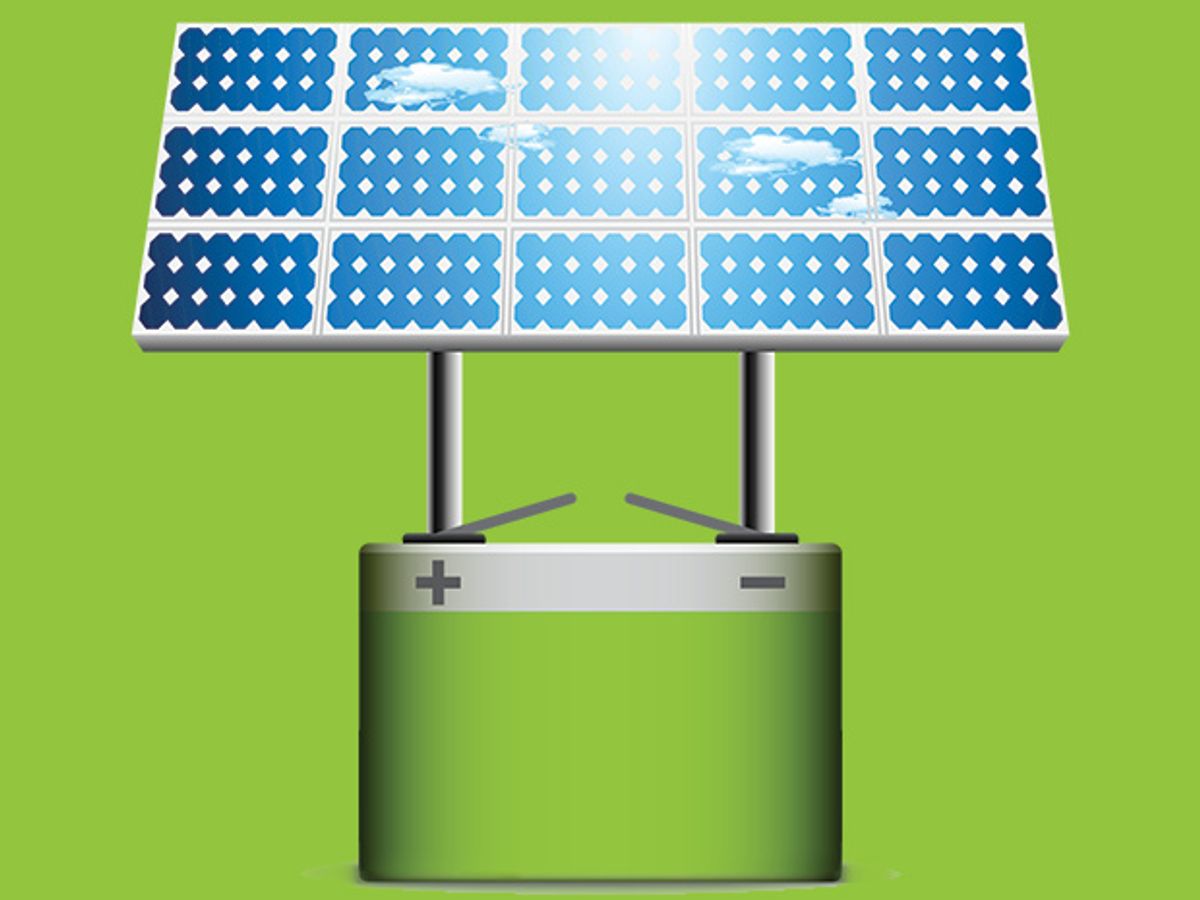Flow batteries are an interesting alternative to conventional batteries because they can store charges in the form of a liquid electrolyte that can be kept in tanks. Only the size of the tanks limits the amount of energy that can be stored. Utility companies and energy engineering firms have been eying these devices because they might replace storage batteries, devices that: have a limited lifetime; are known to be fire hazards; require metals such as lithium, that are limited in supply; and can only store energy in the electrode material, which has a fixed volume. What stands in the way of the wide implementation of flow batteries, in spite of the fact that they are commercially available, is that the compounds they use are expensive, toxic, and corrosive. Additionally, the energy storage capacity per unit volume of the electrolyte is low, typically just squeaking past 20 watt-hours per liter.
Recently IEEE Spectrum reported on a flow battery that has a better performance and uses a basic electrolyte instead of an acidic one, keeping a zinc compound in solution. Now a team of researchers at Harvard University have reported in the 25 August issue of Science that they’ve created a version that uses two alkaline electrolytes that contain quinone and ferrocyanide—both widely available and non-toxic compounds—in solution. The researchers reported that after 100 charge-discharge cycles, the battery’s stored energy capacity had degraded less than 1 percent.
Michael Aziz, who led the research group, realized that if the negative points of today’s flow batteries—cost and toxicity—could be overcome, the flow battery could become a commercially viable alternative for the storage now badly needed for intermittent energy sources such as solar and wind.
“This looks like a compelling value proposition if you can find inexpensive chemicals that work well,” says Aziz. “We noticed that there is a molecule in plants that takes the electrons from chlorophyll, and it forms an electron shuttle in photosynthesis that ports electrons over and over, without any sign of degradation. That is exactly the functionality you want for the battery,” says Aziz.
However, the molecule did need some work; it was not soluble, and the reduction potential was not the right value. “All these things can be changed,” he noted. “We found ways to render the molecule soluble, and change the voltage, so we have something that works and that is highly soluble.”
The team made it clear that it was headed in this direction last year, when the researchers published a paper in Nature describing how they paired up this compound with bromine, which is a toxic substance. Aziz explains that, “We switched to alkaline chemistry because of the availability of a positive electrode material that is stable and soluble in base, but not in acid, and that is ferrocyanide.” Ferrocyanide is a widely available compound, used as a food additive and which, paradoxically, is not toxic because the cyanide groups are so strongly bonded to the iron atoms already present that they cannot attack the iron atoms in hemoglobin. “So now we have fulfilled our promise by coming through with non-toxic molecules on both sides [of the ion-selective membrane],” says Aziz. “We now have an entirely non-toxic chemistry.”
Flow cells need electrolytes that keep these compounds in solution with extreme pH values so that electrons and ions can flow easily. Most current flow batteries use acids, but the use of a base has other advantages. “Base is just less corrosive than acid, and this allows us to contain these electrolytes with much less expensive materials,” says Aziz.
At this point, about 95 percent of stored energy in the United States is in the form of water pumped up into a reservoir, which can be released to generate power by driving turbines when flowing back down. But in flat or arid areas, this storage option is not available, and it is here that flow batteries could play an important role, argues Aziz. “We are looking at a technology that can be used where pumped hydro cannot—in the middle of a city, on rooftops, near windfarms and solar farms,” he says. However, reaching this goal will require further work. “We need to prove that these molecules can last many thousands of cycles of oxidation and reduction, without doing anything else.”
Is industry interested? When they published their first paper in Nature last year, there was a lot of interest from companies. According to Aziz, “Most of them said, this is really interesting, call us as soon you get rid of the bromine.”



